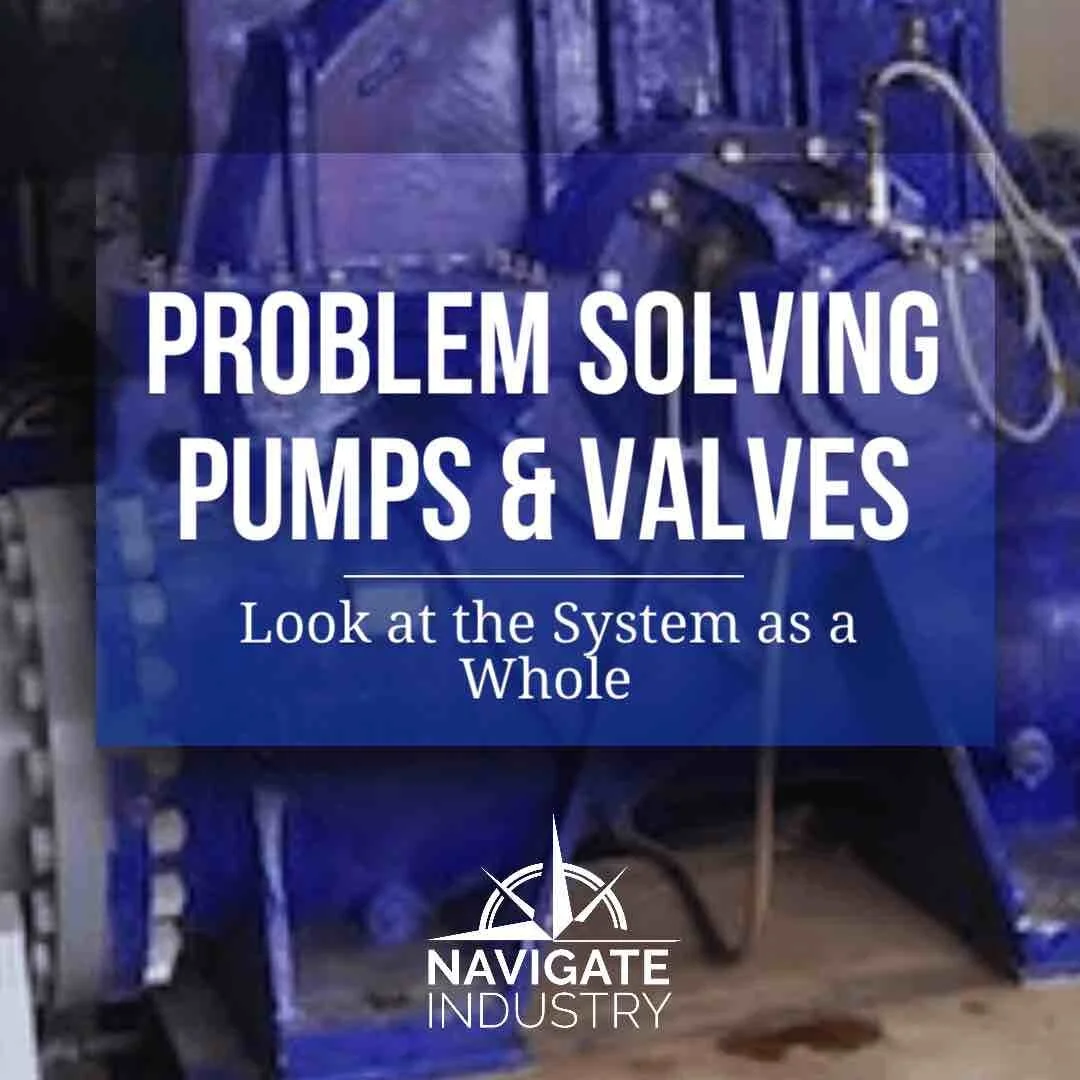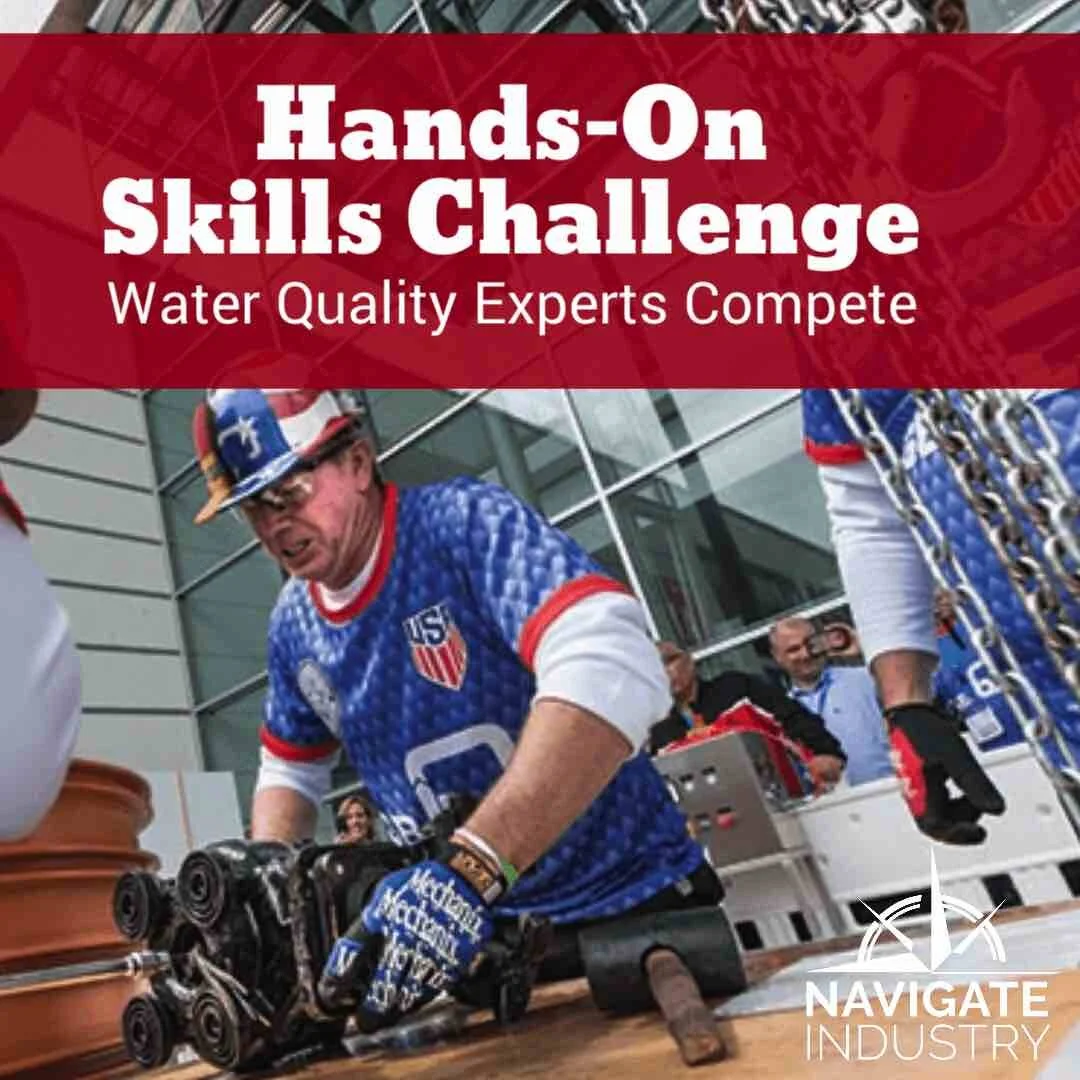Top Wastewater Trends of 2017 - Digitalization, Dewatering and Sewage Clog Technology
/Key players in the municipal processing market share expert insight from the WEFTEC 2017 showroom floor with key wastewater trends of 2017 identified — digitalization, dewatering and sewage clog technology.
By Michelle Segrest, Navigate Content, Inc. - Reporting for World Pumps Magazine
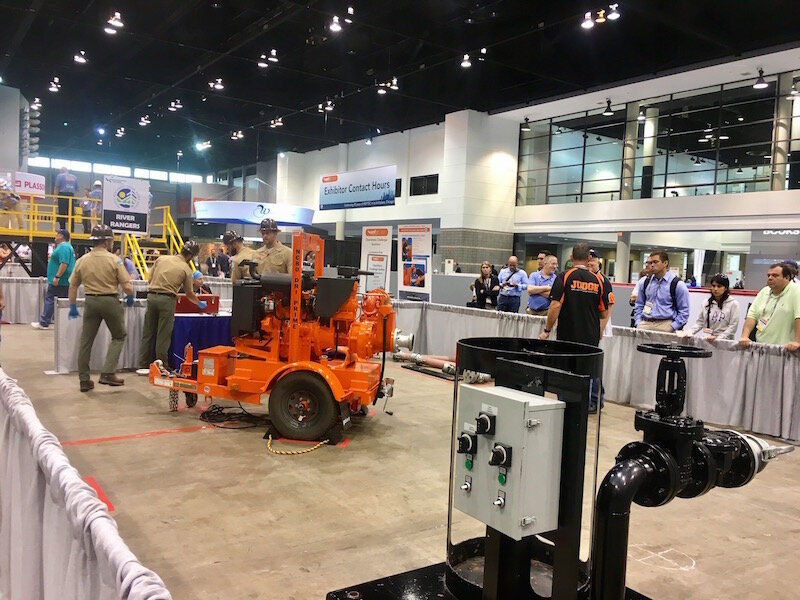

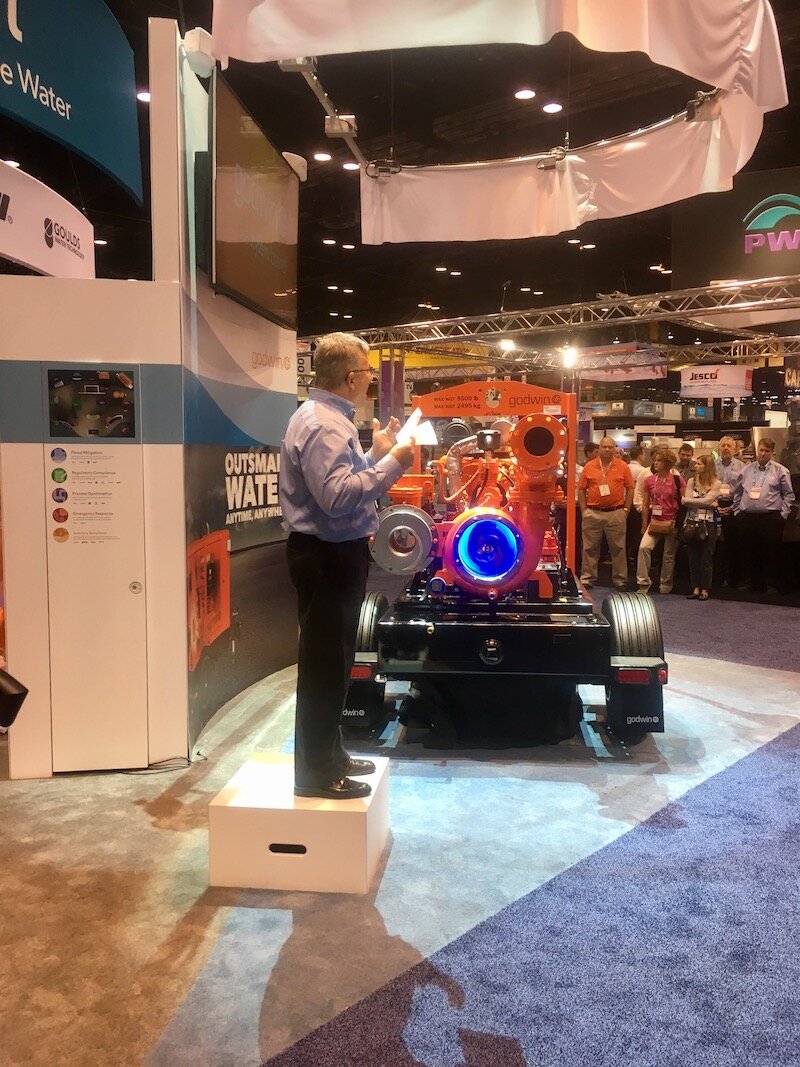
Advancements in equipment and hydraulic technology took a back seat to the power of digitalization and highly-intelligent communication systems at WEFTEC 2017 in Chicago, Illinois.
"One of the fast moving trends right now is the use of data to optimize water networks,” said Kelly McAndrew, Xylem’s vice president of global public affairs.
“More and more we hear from our customers that the aggregation of data, and more importantly, the analysis of that aggregated data, is helping them unlock new efficiencies and new ways of serving their customers. It really is going to change the way we deliver water and how we treat wastewater in the future.”
With plant efficiency as the ultimate goal, digitalization and optimization of data collection and analysis is driving all technology, according to Siemens Senior Market Development Manager Alfred Kennedy.
“You can install more efficient pumps, but you can also install sensors to find out when the pumps will need more maintenance,” he explained. “This is the new wave of predictive maintenance. If your pumps run more efficiently, this translates to less cost and higher energy efficiency. This is the key trend not only in water and wastewater, but in all industries.”
In some cases, new solutions are not necessarily provided by new technology, said Roddy Yates, an engineer and motor expert with Baldor Electric Company, a member of the ABB Group. “Right now we are seeing evolutions happening with the same technologies,” Yates said. “This is technology we have had for a long time. We are just applying it differently. That’s the innovative part for the pump industry.”
Major players in the industry helped to identify and explain solutions for the Top 3 water and wastewater industry trends:
1. Digitalization & Connectivity in the Wastewater Industry
The Industrial Internet of Things (IIoT) has been transforming pumping systems for many years. Also referred to as Industry 4.0, the digital enterprise is driving key advancements in factory automation, standards, safety, security, manufacturing productivity, efficiency, flexibility, and cloud solutions.
“For example, we have some meters that are smart meters,” Kennedy said. “We are also connecting those to our industrial Internet communication devices. Our meters are wireless. We have motors and drives that also have sensors built into them. Everything is collecting data, but the key is to then create ways to analyze the data. The goal is to have sensors on virtually everything so we can retrieve the data and make sense of it.”
To respond to this trend, Siemens created the platform MindSphere, which allows a plant to maximize cost advantages by adjusting its production output to current resource prices without human intervention. Large volumes of data generated during the production process can be collected, saved, analyzed in real time, and turned into information.
“This allows Big Data to become smart data,” Kennedy said. “This cloud-based platform allows customers to create apps that run like an Apple software platform. You can look at a dashboard and understand everything that is going on in your plant.”
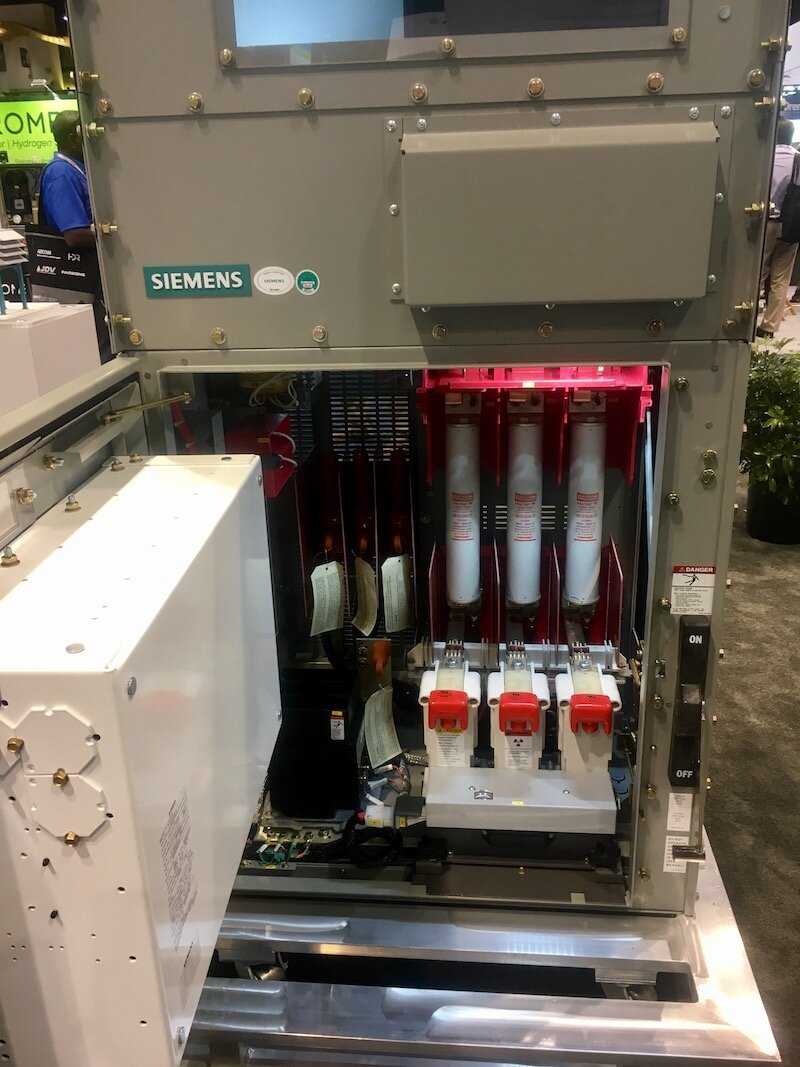
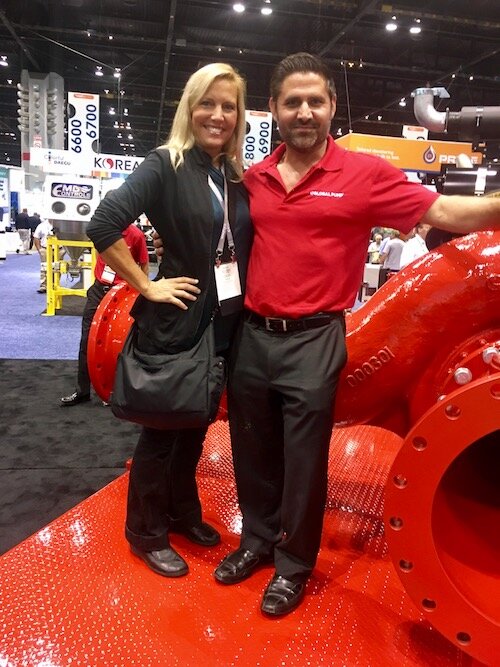
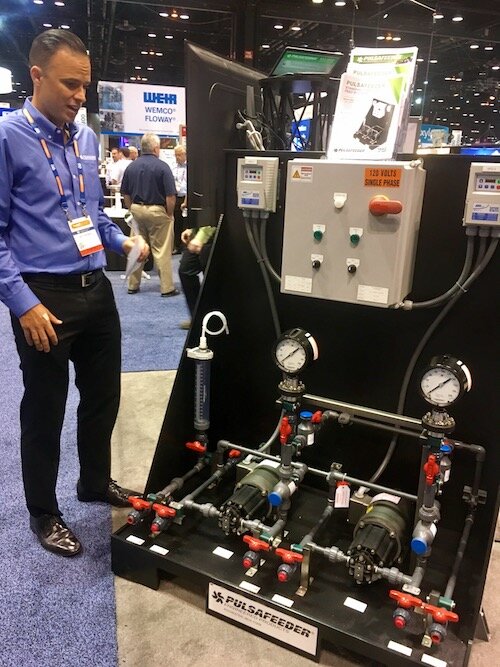
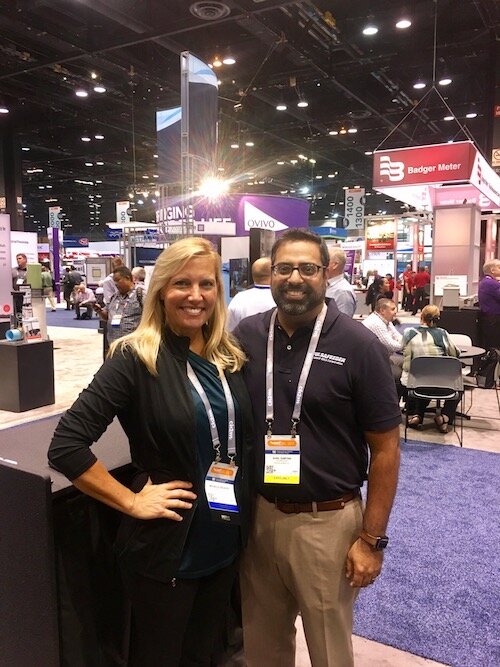
Grundfos USA President Jonathan Hamp-Adams agrees that understanding and using new ways to digitalize systems is driving the market.
“The connectivity of our equipment and collection of data is the name of the game right now,” Hamp-Adams said. “We want to collect the data, analyze it, and try to understand how we can use it to improve energy consumption and service maintenance.”
In the early 2000s, Grundfos was one of the first companies to build an app for smart phones that directly controlled a pump. The Grundfos GO Remote provided intuitive handheld pump control with built-in data collection and reporting.
Today, the company offers an inexpensive app that can communicate with pump systems. “It can essentially tell you what’s wrong with it or what’s happening, or what happened last night,” he said. “It can tell you about the maintenance cycles. That certainly is one of the topics right now… how people are using the systems. How you optimize the designs to match consumption, whether it’s a water treatment plant or a commercial building. That’s the future.”
As the digital world collides with machines, continuing to add intelligent infrastructure to the whole system is trending significantly.
“I’m not exactly sure this is even a trend,” McAndrew said. “It’s the wave of the future. There is no question about it. What is most important is that we find the most effective way to connect that intelligence to the data infrastructure that either already exists, or perhaps it may be something new we can bring to the marketplace.”
Godwin Pumps, a brand of Xylem, responded to this need by introducing a new series of smart dewatering pumps that feature Godwin Field Smart Technology (FST), the first-in-industry telemetry and wireless technology that provides smart remote monitoring and control of the pump from any smartphone, tablet, or desktop computer. With cellular and satellite connectivity and GPS, it enables the tracking, monitoring, and control of the pump in real-time, from anywhere in the world.
“Imagine the value of not having to send someone to the construction site or lift station in the middle of the night, or over the weekend, to see if the pump is running properly, or to check if fuel levels are okay,” said Kevin Snow, Godwin global product manager.
Connective applications are driving the boiler feed treatment industry as well, said Sunil Santami, general manager, Pulsafeeder SPO at IDEX Corporation.
“Connective applications for remote monitoring is the biggest thing we are seeing right now,” he said. “Getting water treaters the information they need in the shortest amount of time possible is driving everything.”
Pulsafeeder recently launched its first connective controller: The Microvision EX. This cooling tower controller can control PH levels and other important data, and is connected to PULSAlink, the Pulsafeeder Cloud. “You can see it anywhere in the world as long as you have access to the Internet,” Santami said. “It gives you all the information. You can set alarms. At some points you can set, chart, and report your data. Everything is managed remotely within the application.”
2. Pumping Technologies used for Disaster Recovery
Pump technologies were critical in anticipation and in response to recent natural disasters in the United States. Many companies were deploying pumps for flood control and recovery in key areas for hurricanes Harvey and Irma. Several hundred units were mobilized from all over the country from direct and indirect channels, as well as distribution channels.
According to Mike Sturgill, Florida-based regional sales manager for Xylem’s Godwin brand, about 175 Godwin pumps are currently installed in Florida and Georgia and around 600 were deployed for both Harvey and Irma recovery. “By the time Irma hit, we were still pumping water in Texas,” he said. “Wemoved a lot of pumps and mobilized them. It kind of ended up being an anomaly once Irma hit. It hit pockets of Florida, Southeast Florida, and Palm Beach counties. There was storm surge and they also lost power, which was a whole different ballgame. We had to move around a bit as the storm moved, but as soon as it hit the area, we responded within 24 hours.”
Rainwater overflows and flooding have long been problems that pump tech-nology helps to solve. But in a natural disaster, the operators go above and beyond the call of duty.
“Our employees who live and work in the affected areas were working around the clock,” said Xylem’s Texas-based Godwin regional sales manager Robert Cloud. “We had employees in the Houston branch that lost everything in their own homes, but they were still coming to work. The same thing was happening in Florida. They had no power. They had water in their homes. They had to move their families; some had to be boated out. But they were still back on the job making it happen.”
Global Pump Company and its subsidiary Mersino Dewatering also responded to these and other hurricanes in recent years. For Harvey and Irma, the company deployed 40 tractor-trailer loads of equipment to Texas and then sent that equipment to Florida three weeks later.
But there are other disasters that require the use of pumps, said Global Pump President Gino Mersino. Mersino and his teamrecently responded to a large sinkhole in Detroit, which required eight large 20 inch trash pumps to bypass the sewage and seven 60 ft long vertical turbine pumps. The company had to design the system onsite and create a custom chopper blade to handle the extensive ragging that occurred during the 9 month recovery.
“People are generous to call us unsung heroes,” Mersino said. “But we are just doing our jobs. We do take a lot of pride in being responsive and providing that service.
3. Wastewater Pump Technology for Controlling Sewage Clogs
With increased water usage, aging infrastructure, and the onslaught of more trash, rags, and debris in sewage systems, pump clogging continues to be a growing concern in wastewater pumping applications. Companies like Crane Pumps & Systems respond to this trend with advancements in grinder and chopper pump technology.
“We have always been watching the waste stream,” said Walt Erndt, vice president and general manager of Crane’s municipal group. “More and more is going into the waste stream. Water is dropping. The waste stream makes it difficult for the standard traditional pump. We are seeing situations where there are very aggressive waste streams, and extreme chopping is needed. For example, in systems near a prison you might get something like a jumpsuit that will get flushed down the toilet. There are cans and car tires and all kinds of storm debris. And of course, there are disposable wipes that are not really disposable. All these things can easily clog a pump if not properly shredded and passed through the vortex.”
In response to this trend, Crane launched two new products at WEFTEC, a BLADE grinder pump and new chopper pump, SITHE, which has an industry exclusive cutting design that uses a slicing action that also helps get more life from bear-ings and seals.
Xylem also presented a product to the market to tackle clogging, the NC150S, the first product in the Godwin S Series of smart dewatering pumps. According to Xylem’s senior vice president of Dewatering, David Flinton, the end impeller makes this product unique.
“Reliability is not just the equipment breaking down or failing,” Flinton explained. “It’s the number of times the equipment clogs and you have to go in and shut it down and unclog it. We have much less clogging in sewer bypass applications with this product." WP
Michelle Segrest is President of Navigate Content, Inc., a full-service content creation firm. She has been a journalist for more than three decades and specializes in covering the people and processes that make a difference in the industrial processing industries. Contact her at michelle@navigatecontent.com









